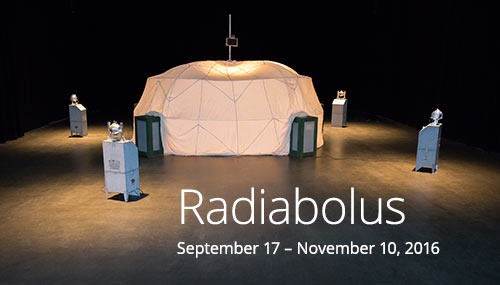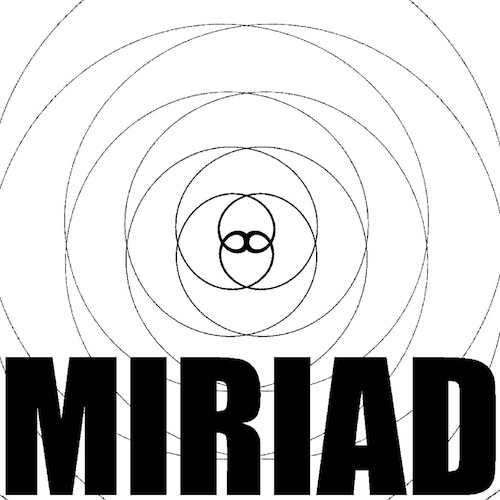Radiabolus
September 17 – November 10, 2016
Saucier & Heys: Radiabolus
Radiabolus is the third major robotic sound project produced by Saucier & Heys. Consisting of Robert Saucier (a professor in Sculpture and Robotics at the University of Quebec in Montreal, Canada) and Toby Heys (a Digital Technologies Researcher at the Manchester School of Art in England) Saucier & Heys have worked together for over 12 years producing installations for galleries and museums across Europe, Canada, and the USA. Creating kinetic sculptural sound systems that store and amplify the contents of nebulous archives has been a central theme in their work, from the 150 stories collected for Infrasense to the collation of viral eulogies for Virutorium. In this vein Radiabolus is based on an archive of over 100 soundtracks from military recruitment adverts spanning 25 countries and dating back to the 1950s.
Radiabolus is a project that has arisen from Saucier & Heys’ ongoing interest in the sonic techniques and strategies deployed by military organisations in order to seduce (often young) people into their ranks. Following the onset of WW2 Army and Marine recruitment adverts for radio and television have been an important tool for military organisations around the world, each country having a distinct flavour and set of techniques for persuading their citizens into organised forms of state sanctioned violence. When one thinks about the use of sonic apparatus as a force multiplier, the most obvious associations are the use of death metal, rap and country music to torture detainees in Guanatanamo Bay or the playing of anthems to increase moral and camaraderie troops that are about to enter a conflict zone. The use of music in adverts is a less considered and understood dynamic within the military’s sonic arsenal. The fact that the music used in adverts is abstracted from the theatre of operations, delivered as it is into the domestic setting of a dwelling, does not mask its insidious nature, however. In fact it could be proposed that it is this subtle type of ambient violence that is becoming the emergent modus operandi of the military-entertainment complex. As it embarks on territorialising a new vista of power/conflict, namely that of the human sensorium, it is that which resides at the edges of the perception – the liminal and nebulous, the sonic and haptic – that will increasingly become the phenomena that is weaponised.
The interactive elements of Radiabolus function in a purposefully basic manner. Upon entering the gallery space, audience members are met by a stream of numbers being emitted by a Hypersonic Sound System (directional ultrasonic speaker). The numbers are akin to emissions from radio-based ‘Number Stations’ and supply the audience with codes to enter into the 5 ‘industrial’ military style jukeboxes that surround the glowing parachute in the middle of the space. To enter the number codes into the mechanical speaker devices, one has to turn the large knob on each jukebox panel, almost akin to the process of opening a safe. Upon completion of the task, the speakers open up for a designated period (each jukebox has a different time span of either 30, 40, 50 seconds etc) and a piece of music from a military recruitment advert is played (with all voice overs removed). Military recruitment advert soundtracks from the following countries are used in the work – Afghanistan, Australia, Austria, Bangladesh, Canada, China, Czech Republic, Denmark, Finland, France, Georgia, Germany, Great Britain, Holland, Hungary, India, Israel, Lebanon, Mexico, North Korea, Norway, Republic of Ireland, Republic of the Philippines, Romania, Russia, Singapore, Slovakia, Slovenia, South Africa, South Korea, Sweden, Syria, USA.



